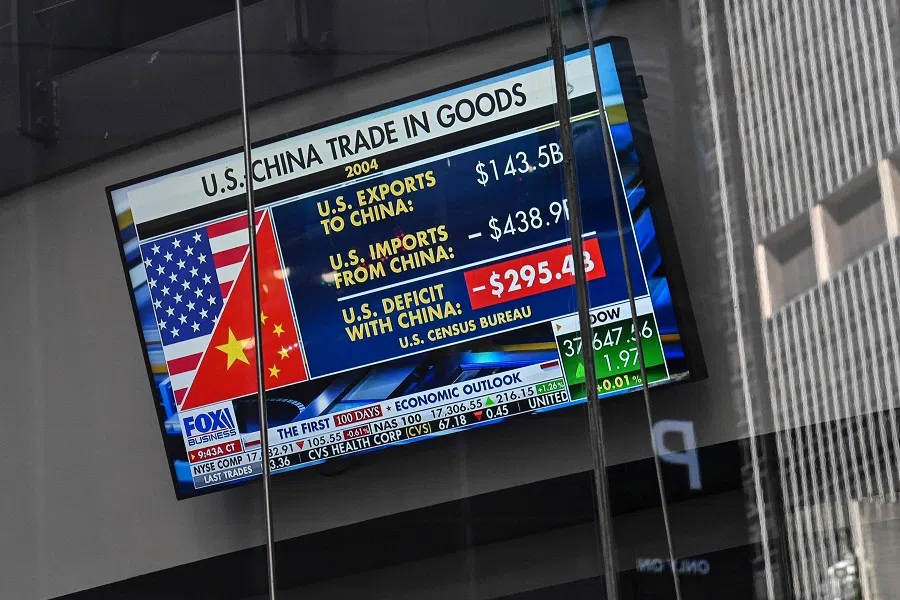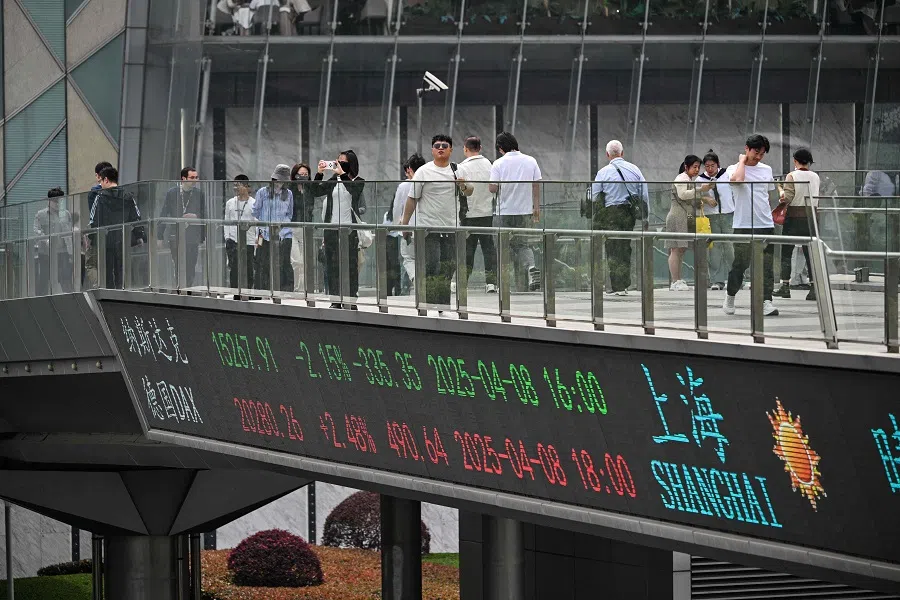Beijing’s tariff playbook: Let Trump win battles, lose the war
China’s response to Trump tariffs shows that this may well be the beginning of a more autonomous China — one that has learned to weather Trumpian chaos not by matching it, but by making itself immune to it. Commentator Imran Khalid shares his views.

It’s often said that Donald Trump doesn’t play chess — he flips the board. Yet even in the era of transactional tantrums and punitive tariffs, not every opponent responds with similar theatricality. China, under sustained pressure from Washington’s economic provocations, is not so much retaliating as it is quietly reengineering its financial anatomy for long-term resilience. What we’re witnessing is not Beijing blinking, but Beijing building.
Constructing a financial immune system
On 12 May, a temporary 90-day truce was declared between Washington and Beijing, dialing back the tariff fireworks to a duller burn — 10% tariffs from both sides. A win? Perhaps. A ceasefire? Arguably. But the real story lies not in the de-escalation, but in what China has been doing between the tariff volleys: it is constructing what could best be described as a financial immune system — an elaborate, state-coordinated framework to buffer the economy against repeated external shocks, particularly the kind generated by Trump-style economic nationalism.
The optics of restraint — Beijing slashing 91% of its retaliatory tariffs — conceal a broader recalibration. China is not merely reacting to the latest turn in the Trumpian tempest. It is immunising itself against the very idea of America as a reliable economic interlocutor.
From early April onwards, a network of state-backed institutions sprang into coordinated motion. The face of this campaign is Central Huijin Investment Ltd., the unassuming but potent subsidiary of China’s sovereign wealth fund. On 7 April, Huijin quietly announced plans to expand its holdings in exchange-traded funds (ETFs), aiming to shore up domestic stock markets against abnormal fluctuations. This wasn’t market tinkering — it was statecraft through monetary muscle, a signal that Beijing prefers stability over spectacle.
China Chengtong Holdings and China Guoxin Investment have collectively injected tens of billions of RMB into strategic sectors — particularly green technology and advanced manufacturing.

But Huijin is hardly alone. The People’s Bank of China (PBOC) issued a ten-point monetary policy blueprint to inject long-term confidence into the markets. This included a 0.5 percentage point reduction in the reserve requirement ratio — estimated to free up 1 trillion yuan in liquidity — while avoiding the inflationary risks of broad easing. Importantly, the PBOC had earlier instructed commercial banks to dial down offshore dollar purchases, subtly shielding the renminbi without triggering panic.
State capital operators are also on the move. China Chengtong Holdings and China Guoxin Investment have collectively injected tens of billions of RMB into strategic sectors — particularly green technology and advanced manufacturing. These are not mere stimulus measures; they represent an industrial doctrine tailored for self-sufficiency, one that can weather a storm not just of Trump’s making, but of systemic decoupling from the West.
The National Financial Regulatory Administration (NFRA), for its part, has lifted the cap on equity investments by insurance companies, potentially mobilising over 1.6 trillion RMB in long-term capital. Share buybacks by major conglomerates — like the seven subsidiaries of China Merchants Group and China Huaneng’s green energy units — round out this carefully scripted performance of institutional confidence.
By contrast, China’s response has been remarkably untheatrical, almost bureaucratic in its precision.
Best offence a bulletproof defence
The point of all this activity isn’t to “win” a trade war, however that dubious trophy might be defined. It’s to avoid needing to fight one at all. China seems to have learned that the terrain of global capitalism is now permanently unstable, and in such an environment, the best offence is a bulletproof defence.
The 90-day tariff truce with Washington may offer tactical breathing room, but Beijing’s strategic arc is clear. Trump’s presidency inaugurated a new era of economic coercion — tariffs as leverage, trade as warfare — while China’s counterplay is to render such tactics impotent. Not by shouting back, but by fortifying the economic architecture that allows it to shrug them off.

There’s precedent for this kind of approach. Throughout the Cold War, the Soviet Union engaged in military brinkmanship while pursuing ideological containment. China, with none of the dogmatic rigidity of its erstwhile comrades, is opting for what might be called capitalist containment: shielding its financial markets, currency and industrial base from the oscillations of an unpredictable global order.
Trumpism, after all, is not a policy; it is a posture. It privileges short-term deals over enduring arrangements, bluster over balance and spectacle over substance. By contrast, China’s response has been remarkably untheatrical, almost bureaucratic in its precision. But therein lies its strength. While Trump tweets, Beijing tweaks — regulations, capital flows, industrial priorities.
Even the diplomatic language has shifted. A recent Chinese white paper advocated “dialogue and mutually beneficial cooperation”, an olive branch in form, perhaps, but also a subtle assertion that it is prepared for a world where such cooperation might not materialise. China is not banking on reconciliation; it is preparing for its absence.
The true test of Trump’s trade tactics won’t be whether they temporarily reduce deficits or boost certain industries. It will be whether they prompt rival states to reconfigure their economies in ways that reduce long-term dependence on the US market. In that respect, China is already well on its way.
This is not the end of the trade war. But it may well be the beginning of a more autonomous China — one that has learned to weather Trumpian chaos not by matching it, but by making itself immune to it.

Beijing’s gambit is not to win the game by American rules, but to slowly change the rules themselves — favouring institutional insulation over interdependence, capital allocation over confrontation, and financial immunity over fiscal theatrics.
This is not the end of the trade war. But it may well be the beginning of a more autonomous China — one that has learned to weather Trumpian chaos not by matching it, but by making itself immune to it.





